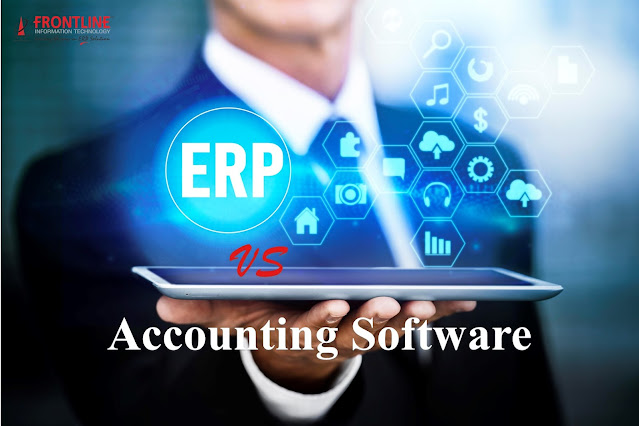7 ways to assure a Successful ERP upgrade plan.
Even though Enterprise Resource Planning (ERP) Systems are encyclopedic and flexible, there are times when you will likely need to upgrade your solution, especially at a time of business growth. Upgrades are non-strategic actions that are needed to remain present to be supported by their ERP dealer. In some circumstances, companies may upgrade due to a demand for a better solution, because the software they are currently using is no longer backed.
These are the 7 ways to assure a Successful ERP upgrade plan.
1. Look for options
While upgrading to a new ERP software there may be a numeral of options to facilitate processes and silos to guarantee a favorable influence on efficiencies and the bottom line. It is necessary to analyze all factors and look into all options available to ensure you will be obtaining the most out of your upgrade. Writing wants and needs lists can help to outline where improvements may be desired and where the current system may be lacking.
Often routine software users are not included in the upgrade process when these individuals likely have the most insight into pain points. We advise including these people in the ERP project by asking if they sense the solution is lacking something and what could help them to be more efficient.
2. Check out available modules and extensions of your current solution
Often during ERP Executions, many modules are not counted due to the business not needing them at the time, be certain to peek into your system and what is available to see if there are additional modules that could be set up during the ERP upgrade project to fill the gaps you currently have.
Analyze exactly what the unused modules do to see if there is a benefit in configuring them for your organization. Further, if your business is upgrading due to features and capabilities the implementation of an ISV (Integrated Software Vendor) may be a solution rather than upgrading your solution overall.
3. Make sure the information is correct and error-free
It is important to take a moment to ensure things like policies, procedures and documentation is up to date as it has likely changed since first implementing your ERP Software. Review the documentation, procedures, and applications to ensure everything is up to mark and does not require any alterations or modifications. These updates can not only help efficiency, and consistency, but also hiring and other business members.
4. Analyze processes, workflows, and reporting
In addition to documentation being updated since the implementation of your software, often your company operations are another aspect that has altered over the period. It is a crucial factor for making your workflows and making sure tools are being used. An ERP upgrade is the ideal time to visit and check if your current workflows are fulfilling both enterprise and audit necessities. We suggest inspecting to see if new enhancements, modules, or features can help to improve the workflows in place.
When it comes to reporting it is important to make sure reports are up to standards and show the important business details needed. An upgrade is the right time to talk to management and those analyzing reports to see if there is something that would be beneficial if added. During the process of an upgrade, there are different factors being varied; it can be simpler to notice inefficiencies than when completing one task by itself.
5. Establish a project team and plan
It is vital to have a plan and managers can help to ensure a successful implementation of the software. Choose individuals from every department who want to be involved, have the appropriate skill set, and a Team Players. This will ensure that the processes will go smoothly and that the updates and modifications required will be covered.
Align the goals and objectives of the upgrade and the organization. This will help to meet company goals and get everyone on the same page and why the upgrade is taking place and its significance. Draft a plan that is precise and straightforward and strive to stay within the:
• Project plan & objectives
• Scope
• Timeline
• Infrastructure plan
• Project roles and responsibilities
• Budget
6. Make training a priority
Once your ERP upgrade is concluded, we recommend delivering training to the employees on new features. This will help to ensure individuals are utilizing the system effectively. At Frontline information technology, we offer full training and events tailored to your ERP solution. With the right training, your team can use the entire ERP system effectively.
7. Follow up & evaluation
It is vital to follow up with everyone who uses the system. Make sure that there are concerns, or other details left open. Make it a routine to personally follow up with department leaders and staff. An individual approach makes it easier for someone to ask questions or ask for help.
We also recommend evaluating the solution oftentimes, which will aid to ensure things are continuously running as desired. Staying up to date with new updates and features will help your business to get the most out of your ERP system while staying efficient and supported.
Why Frontline Information Technology?
Frontline Information Technology drives businesses through a process driven by best practices, to ensure ERP upgrades are more than an IT project; leading to business transformation.
With an experienced team of business application, IT, and design consultants, Frontline Information Technology offers a comprehensive range of services including requirements analysis, management consulting, system design, HORIZON HRMS, HORIZON FMS, HORIZON EBS, HORIZON e-Procurement, BI, configuration, software training, and technical support in accounting,




Comments
Post a Comment